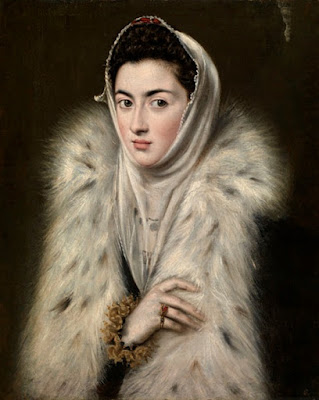Pollok House and Estate, Spanish Art, European Emblems and links to European language learning

Pollok House
Pollok House is the last of a series of houses built on the same site, as homes for members of the ancient and celebrated Maxwell, later Stirling Maxwell family. Pollok House was gifted to the City of Glasgow in 1966, and is managed for the city by the National Trust for Scotland.
Photos of Pollok House : J Wilson
Spanish Art
The elegant Georgian House, with a magnificent view south over and beyond the White Cart river, was built in 1752. It is fundamentally Georgian with sympathetic early twentieth-century additions. One of its most important aspects now though dates from rather later: the collection of Spanish art (as well as works by Rubens, Raeburn, William Blake and others) amassed by Sir William Stirling-Maxwell (1818-1878, initially William Stirling) who at different points in his career was the MP for Perthshire, Rector of both St Andrews and Edinburgh Universities, and Chancellor of the University of Glasgow. The paintings now hung in Pollok House include works by Coello, El Greco, Goya and Murillo.
Museum no: PC.159
Alonso Sanchez Coello (active 1531/2-1588; Spanish), Philip II of Spain (1527-98), dating from around 1570. Oil on canvas
Stirling Maxwell Collection, gifted 1967.
© CSG CIC Glasgow Museums Collection
Coello was born in Spain of Portuguese parents, educated in Flanders and Portugal, and trained by the Dutch portrait painter Antonio Moro, whom he succeeded as Court painter to Philip II. A true European! Extensive research has now established that The Lady with the Fur Wrap, previously attributed to El Greco, is also by him (http://collections.glasgowmuseums.com/mwebcgi/mweb?request=record;id=209389;type=101 and https://www.bbc.co.uk/news/uk-scotland-glasgow-west-50388375).
Museum no: PC.18
Alonso Sanchez Coello (active 1531/2-1588; Spanish), Lady in a Fur Wrap, dating from around 1580-88. Oil on canvas
Stirling Maxwell Collection, gifted 1967.
© CSG CIC Glasgow Museums Collection
William Stirling Maxwell travelled widely, but especially in Spain, and developed an interest in Spanish art which went far beyond that of an amateur, and indeed beyond collecting. He published extensively, with a number of titles relating to this interest:
As William Stirling:
- Annals of the Artists of Spain (1847)
- The Cloister Life of the Emperor Charles the Fifth (London: John W. Parker & Son, 1852)
- Velazquez and his Works (1855)
As Sir William Stirling-Maxwell
- Don John of Austria (two volumes, 1883)
Emblems
But Sir William’s interest in Spanish art led to another ongoing area of interest in Glasgow: emblems. Not emblems in the popular sense of advertising slogans etc., but the word/image genre which flourished especially in the 16th-18th centuries:
The images involved went beyond mere illustration; they conveyed meaning in ways which also function in Spanish (and indeed other) paintings. Emblems are a completely pan-European genre: many included text in Latin, the universal language of European learning, and can be found in the literatures of France, Germany, the Low Countries, Italy, Spain and Portugal, Hungary, Poland and even Russia.
To help his understanding of Spanish art, Sir William assembled what is the most important emblem book collection in the world (over 2000 items), and his son, Sir John Stirling Maxwell (1866-1956) bequeathed the collection to the University of Glasgow (https://www.gla.ac.uk/myglasgow/archivespecialcollections/discover/specialcollectionsa-z/stirlingmaxwellcollection/). The collection was housed, at least latterly, in the family’s home at Keir House, near Stirling, but now has its home in the Special Collections Department of the University of Glasgow Library.
From the first emblem book in Spanish, a translation from the Latin:
Alciato, Los emblemas, Lyon (France): Macé Bonhomme, 1549
Moreover the collection, which continues to be added to, has become a focus of study into the genre, attracting scholars from all over the world, including for three international conferences of the international Society for Emblem Studies (https://www.emblemstudies.org/). Three members of Glasgow loves EU have used the collection as a basis for teaching and research.
Map Reference : Euro Driving Tour






Comments
Post a Comment